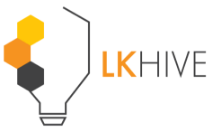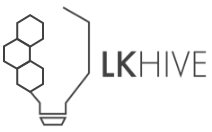Diana Nole
Executive Vice President & General Manager, Healthcare Division at Nuance
What does innovation in Health IT mean to you?
Technology has the power to make people’s lives happier, healthier, and more productive, which is why I chose to focus my career on Health IT. The potential for technology to disrupt the healthcare industry while providing us the opportunity to better serve patients and the people who care for them is incredible. At its core, innovation means applying technology to improve outcomes. Collectively, we talk about the healthcare “system,” so we need to apply systems-level thinking to our approach to innovation. We must evaluate how the technology solutions we develop fit into that complex system at both micro and macro levels. I first started seeing that when I was a computer science major in college and in greater detail as my career in Health IT progressed. You certainly need great technical skills, but you also need domain expertise, a comprehensive understanding of the problems you’re trying to solve, and collaborations with like-minded partners. Those are the factors that drive innovations that can deliver meaningful improvements in patient outcomes, physician burnout, health system financial integrity, and healthcare experiences overall.
Never has it been more critical to innovate in service of those who care for others. That’s why I am proud to work side-by-side with some of the most exciting, tenacious innovators, developers, and healthcare organizations who are solving some of the most complex problems and setting the pace for what’s next in the industry, whether it’s ambient intelligence that is removing the burden of clinical documentation for doctors, AI algorithms that are assisting with the early detection of diseases or helping to create a better digital experience for patients.
As consumer and patient expectations continue to change, the healthcare industry – and the technologies that support critical healthcare workers – must change as well. Technology is about making clinicians’ jobs easier and putting technology in the background so patients can be front and center.
How do you ensure your organization is keeping up with the continual advances in technology?
To keep up with continual advances in technology, I believe in a three-pronged approach:
- Clear vision, purpose, and values: There is a lot of important work to be done in supporting the healthcare industry from a technological standpoint. It’s essential to have a clear understanding of what vision you are trying to advance and what success looks like, and how you will measure that success. This helps drive alignment, shared purpose, and understanding across teams. When you layer in a core value set, you set clear expectations and standards for how you will operate— and how you will achieve that vision.
- Dedicated investments in research and engineering teams: A dedicated research organization is at the heart of innovation and discovery. This requires not only funding but critical thinking as well. – We must ensure our teams are always ready and willing to play a game of “what if?” It’s what has driven transformative results, for example, in the ideation and development of ambient technologies. It also puts people and their needs first. If we think about how COVID-19 disrupted healthcare, we realize how it made the need for improved physician and patient experiences clearer than ever. Additionally, this means benchmarking our technology to ensure the best outcomes for our customers. For example, we continually evaluate our ASR and NLU to drive enhancements that prioritize people over processes and make a positive difference. It’s important to note that data stewardship and user trust are the foundation on which you can improve AI-powered solutions most effectively and deliver the best outcomes.
- Strong customer relationships with continuous feedback loops that enable us to understand their evolving needs and provide the best support and service. We partner closely with our customers to ensure we’re innovating at a pace that empowers them to create value with our solutions and make a positive and lasting impact on the global healthcare landscape. For instance, a patient’s journey often begins with diagnostic imaging. When radiologists have a connected platform, they can create their reports more effectively and share them quickly with the referring physician. They can also help ensure that patients don’t fall through the cracks because recommended follow-up exams for incidental findings are not completed.
What do you believe is the biggest challenge facing leaders in the healthcare sector?
The pandemic and its extraordinary demands have dramatically accelerated the digital transformation of healthcare delivery, patient care, and clinician workflows. As COVID-19 cases begin to drop, reducing physician burnout will remain a top challenge for healthcare systems.
Physician burnout is a significant threat to the sustainability of our healthcare systems, particularly as documentation requirements increase. On average, physicians are 15 times more likely to experience burnout than other professionals in any other line of work. Further, physicians can spend up to half of their workday entering data into EHRs. That’s during and after clinic hours and takes up time that they could spend seeing patients or with their families. Physician turnover and reduced clinical hours attributable to burnout equate to as much as $4.6 billion in costs to the United States each year. These numbers are staggering and largely due to documentation requirements. Because of this, physicians feel as though they cannot create the types of patient experiences they want and need to create. Patients feel discouraged as well. These effects have significant clinical, financial, and organizational downstream impacts. For example, the American Medical Association tells us that burnout increases the risk of medical errors by 200%. That’s why it’s critical that healthcare technology companies work together to help reduce documentation workloads and get physicians back to doing what they love, taking care of patients.
How are current trends in Health IT impacting your organization?
COVID-19 has driven an urgent need for global information sharing and access as well as new demand for AI-powered patient engagement and clinical decision support solutions. We can expect these trends to broaden across clinical areas. IT vendors will expand the availability of AI-powered analytics, making it possible to tap into the vast volumes of healthcare data generated every day. We’ll also see increased adoption of solutions that deliver integrated, real-time AI for clinical decision support at the point of care. This will be critical to helping provide better patient care and financial outcomes, improving patient and clinician experiences and satisfaction, and reducing administrative workloads that contribute to clinician burnout.


